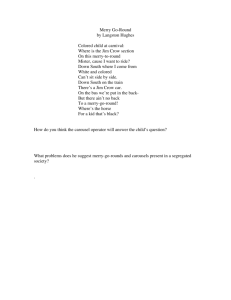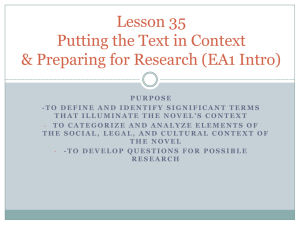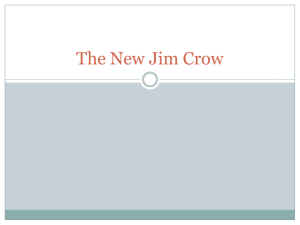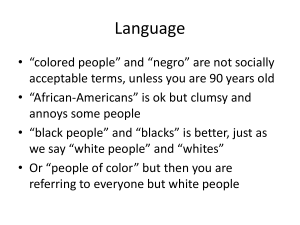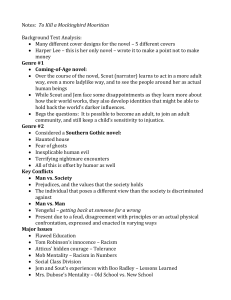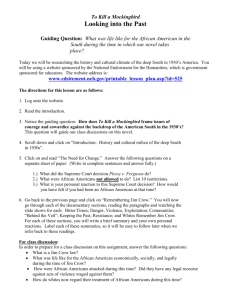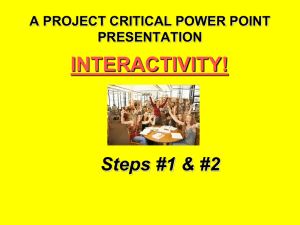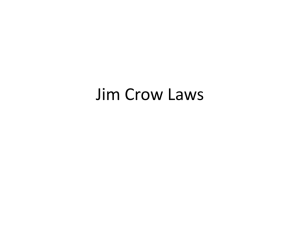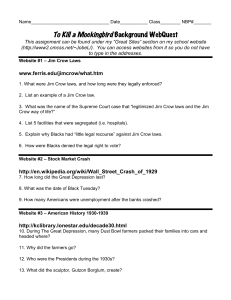SETTING THE CONTEXT
advertisement
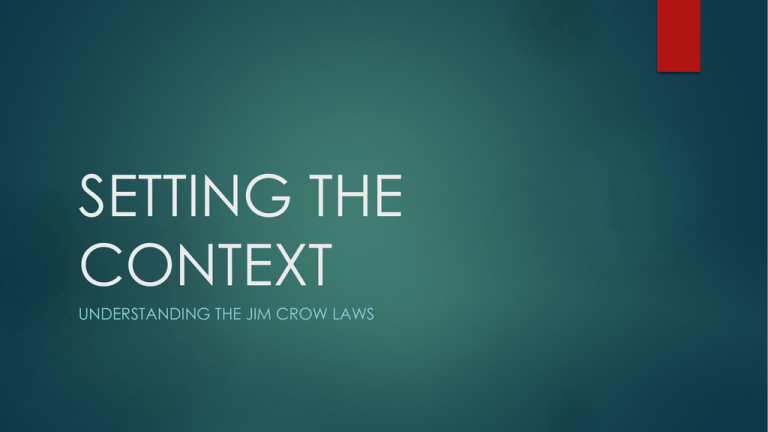
SETTING THE CONTEXT UNDERSTANDING THE JIM CROW LAWS QUICK WRITE Read the quotes on pg. 176 of your Springboard. What do they tell you about the progress toward equal rights for all races during this period of time in our country? Answer in complete sentences. REMEMBER THE CONTEXT Remember what the word context means when we are thinking of starting our novel. The context of a novel or a situation refers to the circumstances or conditions in which the thing exists or takes place. Knowing context helps you understand the novel or situation better. REMINDER ON SOURCES While going through our readings today, we will be deciding if they are primary or secondary sources. A primary source is an original document containing firsthand information about a subject. A secondary source is a discussion about or commentary on a primary source; it offers an interpretation of info gathered form primary sources. JIM CROW: SHORTHAND FOR SEPARATION As we read the essay, “Jim Crow: Shorthand for Separation,” mark the text to identify the words and phrases that help you to define the meaning of the term Jim Crow and its importance in our history. Keep this focus question in mind: What were the Jim Crow laws? Also, while reading, underline the prepositional phrases. Read the Grammar and Usage box to review. This is a great way to see how prepositional phrases are used in writing! JIM CROW LAWS Now we are going to read the Jim Crow Laws. Read the words in bold type and work with a partner to create a list of categories into which you might sort the laws. One example would be creating the category of Transportation Laws. Share your category with the class. You will work with a group of people close to you to read the laws of an assigned category. For example, I may assign your group the category of transportation. Your group will ONLY read the laws related to transportation. As you read the laws in your category, keep in mind the focus question: How did Jim Crow laws deprive American citizens of their rights? You will also use metacognitive markers. METACOGNITIVE MARKERS When reading the Jim Crow Laws, use the following metacognitive markers to respond to the text: • Put a ? Next to lines that are confusing or bring up questions. • Put a *next to lines that are interesting or reinforce what you already know • ! Put a Next to lines that are surprising or help you make predictions. AFTER YOU READ After you finish reading through your category of laws and marking the text, discuss your findings with your group. Next, answer the focus question on pg. 178. This was the question that needed to direct your thinking while you read. On a piece of chart paper, write your group’s answer to the focus question. Then, draw visual representations of your laws to show the class. DISCUSSION OF SOURCES Reread the definition of primary and secondary sources on pg.182. Which of our readings today is a primary source? Which is a secondary source? What are the benefits of a primary source? What are the benefits of a secondary source?
